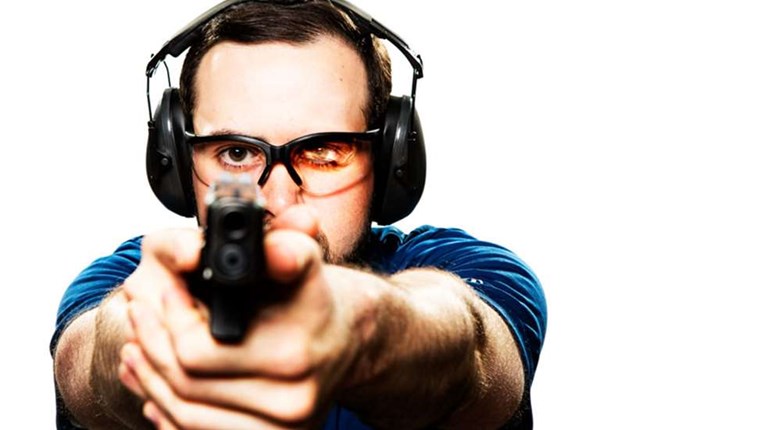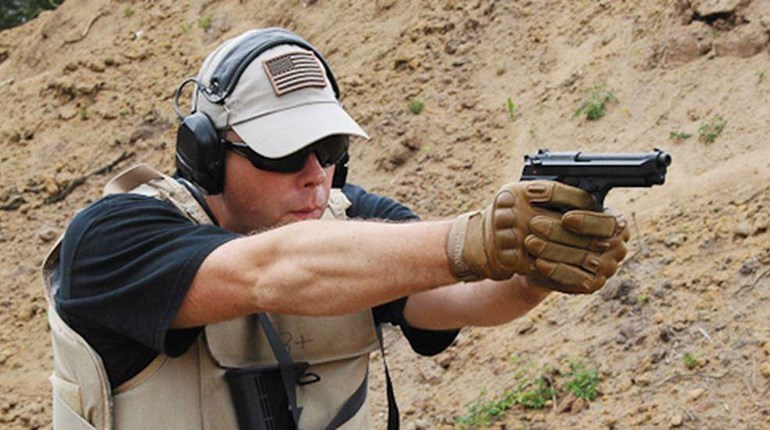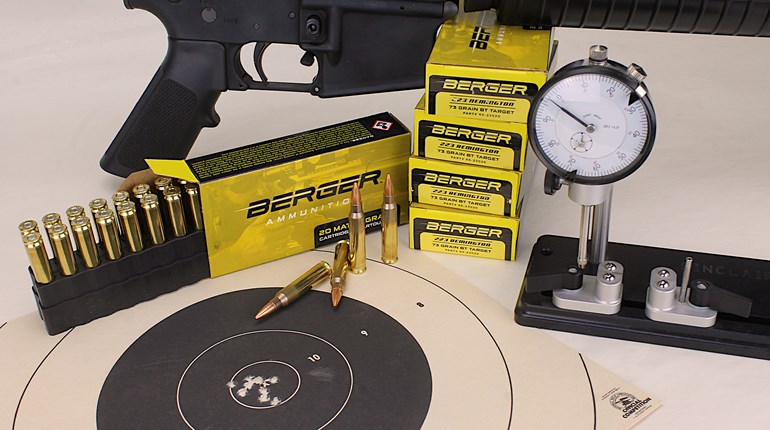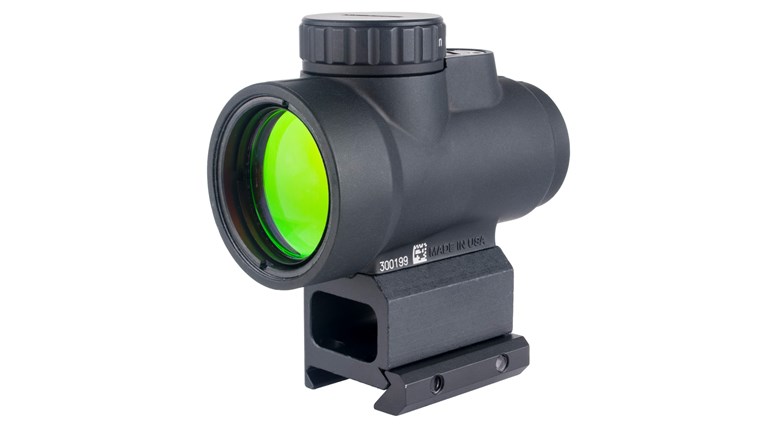
This article, "Bad Guy's Blueprint," appeared originally as a Handbook in the September 2017 issue of Shooting Illustrated. To subscribe to the magazine, visit the NRA membership page here and select Shooting Illustrated as your member magazine.
Bad things happen to good people. Terrorist attacks, home invasions, active shootings, cyber threats, kidnappings and homicides are just a fact of life today. We can either accept this reality and be willing to do something about it, or deny the facts and suffer the effects of being potentially blindsided.
John Adams, the second president of the United States said, “Facts are stubborn things; and whatever may be our wishes, our inclinations or the dictates of our passions, they cannot alter the state of facts...” Those who choose to accept the fact that bad things happen to good people are one step closer in preparation to handle such events than those living in denial.
When it comes to managing a real-world physical threat—ranging from a guy walking up to you at a remote gas station asking for a handout, to finding yourself in the middle of an active shooting and everything in between—it all boils down to control. Either you control the threat or the threat controls you. To stop a threat, you first need to know how to take control of it. The critical question is: How do you control a threat?
Step one in controlling anything is knowing how it works. To control a car, you need to know certain basics such as how to start and stop it, how to steer it and how to make it go in reverse. Without this basic knowledge, you wouldn’t have the faintest clue how to control a 4,000-pound metal box on wheels. This same concept applies to controlling a real-world threat.
You may never know when or where a threat may present itself, but you can most certainly know how. It’s knowing how a threat will present itself that will afford you the opportunity to control and eventually stop that threat.
Like Watching a Movie
Recall the last time you walked in on a movie or a TV show you’d never seen before, already playing and nearing the end. Were you able to identify the characters? Could you follow the plot? Were you aware of what had already happened and what may be the anticipated outcome? Of course not. Unless you watched it from the very beginning, there’s no way to answer any of these questions.
Now, recall a movie you’ve seen about 20 or 30 times—something like “The Godfather.” Not only can you identify all the characters, plot, sub-plots and sequence, but you know “Hey, this is the part where he says, ‘I’m gonna make him an offer he can’t refuse.’” You can make his claim with 100-percent certainty because you’ve see it so many times. The same applies to the actions of any terrorist, predator or opportunist.
The bad guy must follow an exact script or formula, just like the actors in a movie. He has no choice but to follow that script in its prescribed order to succeed. Your mission, should you choose to accept it, is to prevent him from following this script for his nefarious plans, or more accurately, what I call the Bad Guy’s Blueprint.
 The Attack Cycle
The Attack Cycle
All predators must first seek their prey. They can’t do anything to you if they first don’t go looking for you. In the process of looking, they at one time or another must choose their victim. These two steps—look and choose—must occur in that order. You can’t choose someone if you don’t first go looking for them.
Next, after look and choose, is to stalk their prey. They may observe you for a while to figure out if you’re really worth the effort; maybe you are, maybe you’re not. Once they make their decision, they then need to figure out how to get close to you. Again, these are mandatory steps—look, choose and stalk—that must be executed in order. If he decides you’re not worth the effort, he’s not going to move to the next step in his plan: close.
After looking, choosing and stalking, the bad guy is then tasked with closing the gap from his physical position to your physical position. Lastly, and only after these first four steps, will he be in the right place and at the right time to execute his attack.
In the intelligence community, we refer to this as the Attack Cycle: Look, Choose, Stalk, Close, Strike. It is this cycle, the execution of these five steps in order—which any predator must follow to present you with a physical threat—that is the Bad Guy’s Blueprint. He must follow all five steps. He cannot omit even one, and he cannot execute them out of order. They must be followed one at a time and in this exact sequence, or he fails.
Now that you’re familiar with the blueprint and how it works, you can take control of his plans at any time. All that is required is that you break this cycle of events at any step along the way.
In the “look” step, he is searching for an easy target. He’s reaching for low-hanging fruit, and if you demonstrate to him that you’re an easy mark, you pass the test and he moves directly to step two (choose).

One of the easiest ways to defeat him at this step is to not put yourself there in the first place. There’s no need for you to drive to a 24-hour convenience store in the seediest part of town at 2 a.m., leave your engine running, windows down, door open and run in with cash falling out of your hands or pockets.
When the predator sees this, it captures his attention and he is attracted to you. As he continues to observe you for further weaknesses, he notices that you have your face buried in your cell phone, which makes him decide to choose you as his easy mark.
After he chooses you, and as part of his step three (stalk), he still needs to verify that you are in fact worth the effort. If you’re still oblivious to your surroundings with your earphones plugged in even after he’s targeted you, then you’re the right prey and now he’s figuring out how best to get to you.
At this point you can still break the cycle, even at this step—simply don’t be an attractive victim.
Put the phone down for 5 seconds. Apply your undivided attention to your immediate surroundings, assess the situation and make your decisions based on your sensory input. At this step, when he sees that you’re aware of him, you are no longer an easy mark and have broken the cycle.
His next step is to close—he moves toward you and, if you still have not noticed that you’re caught in an attack cycle, he’s going to strike (step five). Simply looking up, directly at him (not confrontational, but more along the lines of “Hi, I see you!” body language), you will cause him to ask the question “Are there softer targets around?” and the answer will likely be, “Yes, there are.”
Knowing how a threat must present itself, and the individual steps the bad guy has no choice but to follow, buys you the opportunity to break the attack cycle as it unfolds. When you break the cycle, you disrupt his plan.
Break the Cycle
Three easy ways to break the cycle:
1: Don’t put yourself in harm’s way (no need to go to the ATM at 2 a.m. in a bad neighborhood)
2: Don’t be an attractive victim (cash hanging out of your purse, belligerent or drunk in public, etc.)
3: Make the bad guy ask the question “Are there softer targets around?” and answer “Yes.”
Remember, he must do everything right, follow every single step of the Bad Guy’s Blueprint, one at a time, and in the exact sequence. All you need to do is burn him one time, any step along the way, and his plans are compromised—you’ve taken control. Disrupt his plan and you stop the threat. It’s easy to do when you know how to read the Bad Guy’s Blueprint.





































